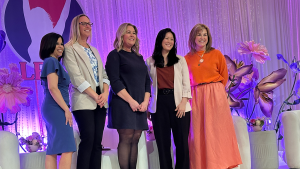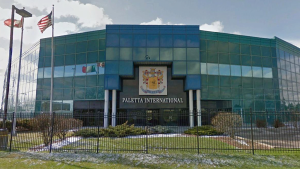The government inquiry into the 2017 Grenfell Tower fire in London that killed 72 residents is in its fifth module spanning the past four-and-a-half years. Dozens of witnesses have testified.
Central to the Inquiry have been the building regulations and approval procedures surrounding the cladding system used for the 2016 refurbishment of the 24-storey apartment tower’s exterior. The combination of materials used has been blamed for the rapid spread of the fire.
The outer layer was Aluminum Composite Material (ACM) panels made by Arconic, a sandwich of PE foam between two layers of thin aluminum. Two brands of foam insulation panels were used under the ACM. Most was from Celotex, a U.K. company owned by French multinational St. Gobain. Kingspan’s Kooltherm K15 represented less than five per cent of the insulation area and was substituted for Celotex insulation due to delivery delays.
Product specifics may not be relevant in Canada. However, the regulatory and approval processes allowing these materials to make their way into the Grenfell project could be informative for both industry and regulators. They reveal the potential risks associated with today’s challenges of pricing, delivery and material substitution.
For example, Housing Department lawyer Jason Beer QC said building regulations had not, in fact, been followed. Beer testified his department “did not have a good understanding of how the regulatory system was working on the ground or how well it was being enforced by local building control bodies.”
Trust had been “both misplaced and abused.”
Legal representatives for the survivors claim both Kingspan and Celotex sold flammable materials knowing they “were dangerous to life.”
Stephanie Barwise QC claimed the construction industry had been allowed to “write its own rules,” resulting in the government becoming a mere “junior partner.”
The Inquiry heard that fire tests conducted in 2007, after Kingspan had introduced a new manufacturing process for K15, described it as a “raging inferno.” The company reportedly kept these results secret, even internally, and continued selling the product. By then, K15 had already been installed on 240 tall buildings.
In 2008, other tests indicated failure within 15 minutes, with “flames coming off the top of the test rig.” The Inquiry was told Kingspan threatened a cladding firm with legal action if it revealed the results of failed fire tests.
But despite previous warnings of misleading certificate wording that stated K15 was of “limited combustibility,” the inquiry learned the U.K.’s Local Authority Building Control (LABC) had essentially looked the other way.“I left it to the others that were dealing with the matter… to follow that up,” LABC director of technical policy Barry Turner testified.
When questioned about a misleading certificate for a combustible insulation product used on the Grenfell project, a former managing director of a building control body made a pun of the matter, saying the issue had been “burning for a long time.”
Kingspan has denied any role in refurbishing Grenfell Tower, saying the K15 insulation used on the tower was “substituted without our knowledge” and was “misused.” And as far as the LABC was concerned, Turner said any use of K15 outside of its tested scope was, “an insurance issue rather than compliance with regs.”
Questioning whether testing and assessments of the K15 foam insulation was carried out in a transparent manner, the Inquiry learned Kingspan was a “significant source of revenue” for the Building Research Establishment, the testing authority. Kingspan had threatened the National House Building Council with legal action after the flawed tests for K15 were exposed.
Furthermore, the inquiry was recently told the government had “hobbled” fire safety experts at the Building Research Establishment appointed to spot flaws in building regulations because of a culture of deregulation, thus limiting them to pointing out “implications” raised by building fires.
Testimony has also been heard that architects specified ACM cladding but failed to hire fire consultants and that project managers neglected to read fire safety assessments.
The Inquiry continues.
John Bleasby is a Coldwater, Ont.-based freelance writer. Send comments and Legal Notes column ideas to editor@dailycommercialnews.com.






Recent Comments
comments for this post are closed